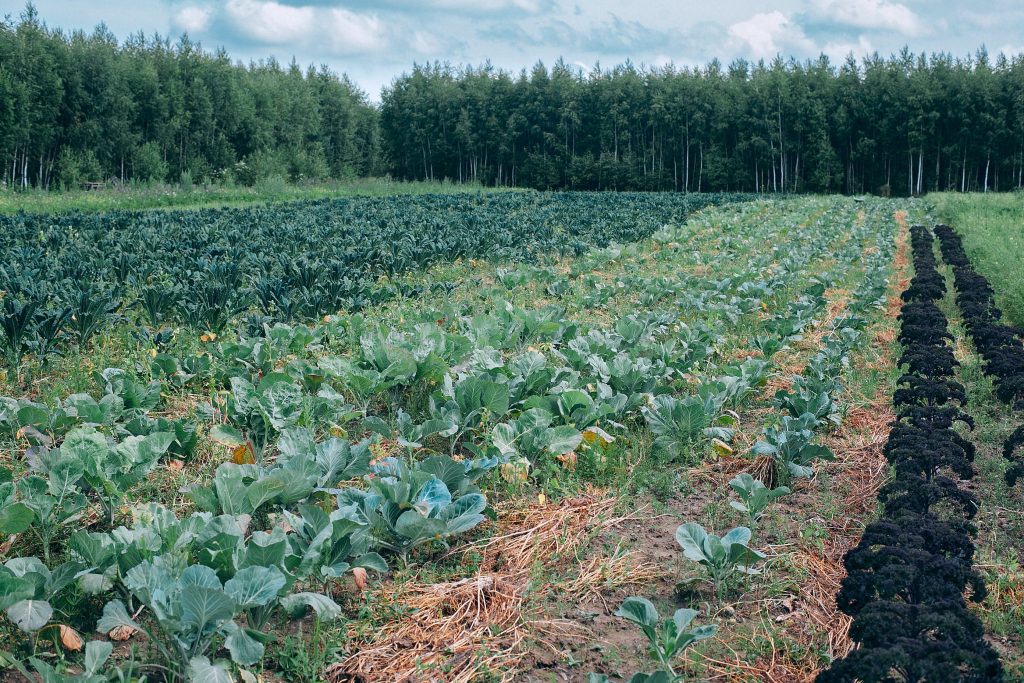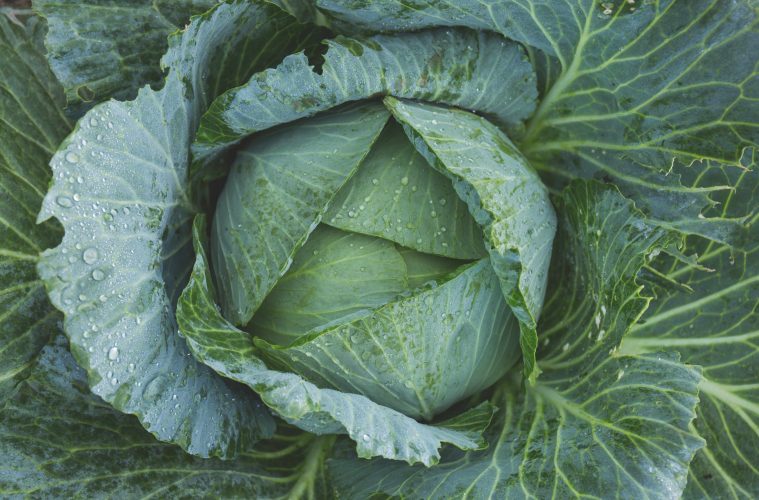If you are looking for something to grow in cool, moist conditions, cabbage is your answer. As a member of the brassica family, they do much better in autumn and winter when the taste is better and they are less troubled by pests. They are extremely economical with a little going a long way – chop up for coleslaw, use as a wrap for meats and vegetables, add to soups and stews, or ferment it to make healthy sauerkraut or Kimchi.
How to plant and grow cabbage
Prep and Planting
Cabbages are heavy feeders and need a good deal of compost dug into the planting area before planting. Make sure the soil is well-draining – if the roots stand in water, it could cause the heads to split and rot.
From seed, cabbages take 60-100 days to mature into well formed heads that are ready for harvest. And with one going a long way, its best to plant seedlings a few at a time, so that the season is extended and you don’t end up with an abundance of cabbage.
Set the seedlings into the ground slightly deeper than they are in the tray and be on the watch for pests if the weather warms up. Practise crop rotation with cabbages as they tend to harbour soil diseases if planted in the same spot.
Plant together with good companions dill, beans and cucumbers and avoid planting with broccoli, cauliflower, strawberries, brinjals and tomatoes.
Watering
Mulch around the plants to keep the moisture levels up and water before midday so that the plants dry out before nightfall. Keep the soil moist but not waterlogged and allow the soil to dry out completely before watering again. Plant on raised mounds to improve drainage.
Feeding
After planting, make sure to feed after 2 weeks. Cabbage are heavy feeders so start with a nitrogen-rich fertiliser every 2-3 weeks and as the heads start forming, switch to a fertiliser with more potassium. This will help form good heads.

Frost Protection
If there is a chance of frost when the plants are still young, cover with frost protection fabric and check them regularly for pests. If the heads have already formed, you should not have a problem with frost.
Pest Control
By planting in autumn or winter, there is less chance of pests being a problem, but beware when the weather warms up and look out for these:
- Aphids suck all the sap from the plant and affect their chlorophyl production which in turn affects the energy of the plant and its performance. Deal with any sucking insects decisively. Spray with a solution of soapy water or, if the infestation continues, spray with an organic insecticide.
- Caterpillars can also be a problem and are easy to spot by the many holes left in the leaves. They can seriously hamper the formation of heads and reduce the yields in a matter of days. Spray with an organic insecticide.
- Thrips are another pest that causes major damage but is hard to spot. Use preventative products to control and avoid infestations.
Harvesting
Firm, hard heads are what you are looking for in a good cabbage. Pull the entire plant and cut off the head. Place the roots and extra leaves on the compost rather than leaving them in the ground where they may attract pests.
Storage
Wrap cabbages in plastic and store in the fridge for up to 2 weeks. Alternatively, make Kimchi or sauerkraut which if properly canned and sealed will last 3-5 years before opening.
ALSO SEE: TIPS FOR GROWING CUCUMBERS: FROM PLANTING TO HARVESTING

